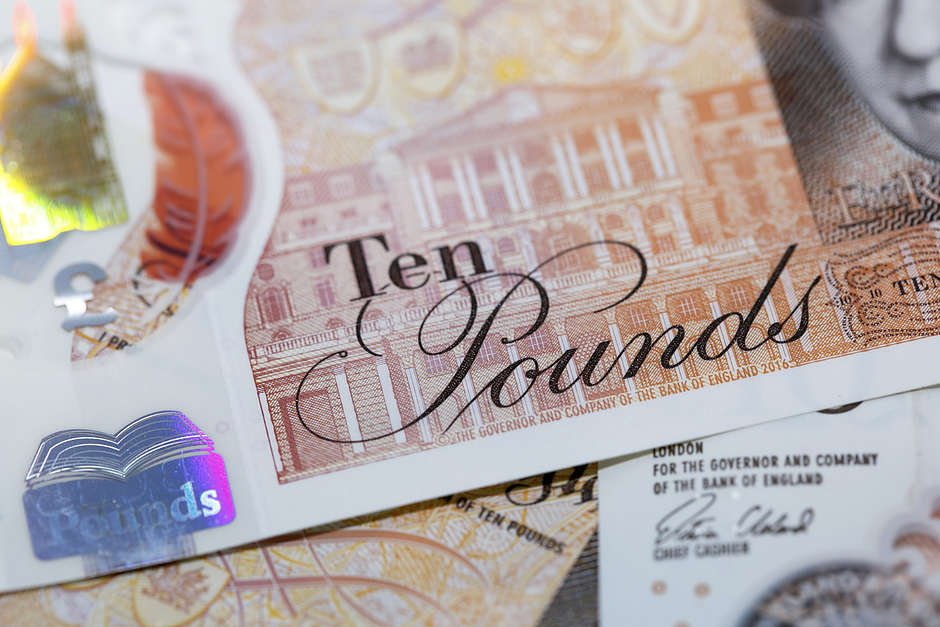GBP/USD holds below 1.3000 after BoE/Fed rate decision
- GBP/USD loses ground to near 1.2975 in Friday’s Asian session.
- The Fed cuts interest rates by a quarter point at the November meeting, as widely expected.
- The BoE decided to cut the benchmark rate to 4.75% at its November meeting on Thursday.

The GBP/USD pair edges lower to around 1.2975 during the Asian trading hours on Friday. The Pound Sterling weakens after the Bank of England (BoE) reduced its interest rates by 25 basis points (bps) on Thursday. Traders will take more cues from the advanced US Michigan Consumer Sentiment data and the Federal Reserve’s (Fed) Governor Michelle Bowman’s speech later on Friday.
After a jumbo half percentage point reduction in September, the Federal Open Market Committee (FOMC) lowered its benchmark overnight borrowing rate by a quarter percentage point to a target range of 4.50%-4.75% at its November meeting on Thursday. Fed officials have justified the easing mode for policy as they view supporting employment as becoming at least as much of a priority as arresting inflation.
Expectations for a December interest rate cut remained strong after the Fed cut its rates in November. The chance of a quarter-point December rate cut rose to more than 68% following the Fed meeting, while the odds of a pause dropped to nearly 32%, according to the CME FedWatch Tool.
On Thursday, the Bank of England (BoE) cut interest rates by 25 bps while raising its inflation forecast. This comes after Labour's released UK budget, which casts doubt on future policy easing. The UK central bank has trimmed the interest rate for the second time this year after it began its easing cycle in August. BoE Governor Andrew Bailey said during the press conference that the central bank needs to retain a “gradual approach” to policy easing.
Pound Sterling FAQs
The Pound Sterling (GBP) is the oldest currency in the world (886 AD) and the official currency of the United Kingdom. It is the fourth most traded unit for foreign exchange (FX) in the world, accounting for 12% of all transactions, averaging $630 billion a day, according to 2022 data. Its key trading pairs are GBP/USD, also known as ‘Cable’, which accounts for 11% of FX, GBP/JPY, or the ‘Dragon’ as it is known by traders (3%), and EUR/GBP (2%). The Pound Sterling is issued by the Bank of England (BoE).
The single most important factor influencing the value of the Pound Sterling is monetary policy decided by the Bank of England. The BoE bases its decisions on whether it has achieved its primary goal of “price stability” – a steady inflation rate of around 2%. Its primary tool for achieving this is the adjustment of interest rates. When inflation is too high, the BoE will try to rein it in by raising interest rates, making it more expensive for people and businesses to access credit. This is generally positive for GBP, as higher interest rates make the UK a more attractive place for global investors to park their money. When inflation falls too low it is a sign economic growth is slowing. In this scenario, the BoE will consider lowering interest rates to cheapen credit so businesses will borrow more to invest in growth-generating projects.
Data releases gauge the health of the economy and can impact the value of the Pound Sterling. Indicators such as GDP, Manufacturing and Services PMIs, and employment can all influence the direction of the GBP. A strong economy is good for Sterling. Not only does it attract more foreign investment but it may encourage the BoE to put up interest rates, which will directly strengthen GBP. Otherwise, if economic data is weak, the Pound Sterling is likely to fall.
Another significant data release for the Pound Sterling is the Trade Balance. This indicator measures the difference between what a country earns from its exports and what it spends on imports over a given period. If a country produces highly sought-after exports, its currency will benefit purely from the extra demand created from foreign buyers seeking to purchase these goods. Therefore, a positive net Trade Balance strengthens a currency and vice versa for a negative balance.
Author

Lallalit Srijandorn
FXStreet
Lallalit Srijandorn is a Parisian at heart. She has lived in France since 2019 and now becomes a digital entrepreneur based in Paris and Bangkok.

















